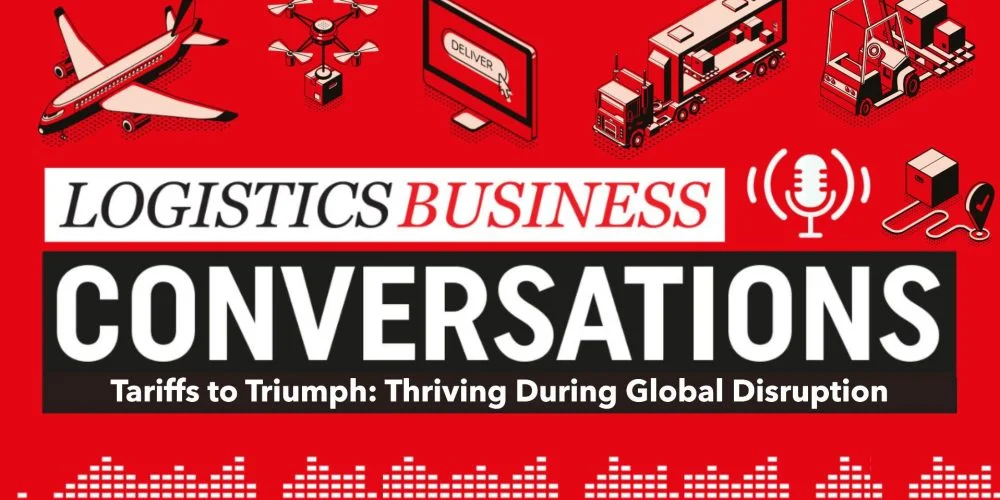Rethinking Global Trade in an Era of Rising Tariffs
The landscape of global commerce is undergoing significant upheaval, with tariffs becoming a dominant force reshaping the cost and flow of goods worldwide. This evolution sends ripples through logistics and e-commerce sectors alike, creating both challenges and unexpected openings for savvy businesses. Understanding how tariffs interplay with supply chains and market access is crucial for companies aiming to not just survive but thrive in these turbulent times.
Understanding the Tariff Reality
Tariffs, or taxes imposed on imported goods, have shifted from being temporary trade tools to permanent fixtures. They directly increase costs for companies relying on international manufacturing, pushing brands to reconsider how and where they produce. The impact cascades through the system: governments collect increased revenue, but consumers might feel the pinch through higher prices.
Who’s Winning and Who’s Losing?
In the current trade environment, some players clearly benefit, while others face hefty obstacles. Governments enjoy additional funds from tariffs, which sometimes fund domestic goals. However, brands with global supply chains see shrinking margins, and consumers encounter steeper prices at checkout. The balance of winners and losers depends largely on the adaptability of each business and their ability to shift strategies swiftly.
Strategies for Mitigating Margin Pressures
When tariffs batter global operations, companies need concrete tactics to maintain profitability and compliance. Here are some critical approaches businesses are using to navigate this changing terrain.
| Strategy | Περιγραφή | Οφέλη |
|---|---|---|
| Localization of Operations | Setting up production or assembly closer to target markets. | Reduces tariff exposure and shipping costs; improves supply chain resilience. |
| Market Diversification | Expanding sales and production into multiple geographic markets. | Spreads risk and taps into new customer bases. |
| Supply Chain Redesign | Revisiting sourcing, manufacturing, and distribution strategies for efficiency. | Improves agility to respond to tariff shifts and disruptions. |
| Duty Drawback Programs | Utilizing refund schemes on duties paid for exported goods. | Offsets some tariff costs and improves cash flow. |
| Entity-as-a-Service | Partnering with specialized entities to manage compliance and logistics. | Ensures regulatory adherence and eases global expansion complexities. |
Putting Theory into Practice
Companies that embed these strategies into their operations often find a path through complexity. For example, shifting production closer to end consumers can mitigate tariff effects and reduce shipping delays—an elegant workaround in logistics that also aligns well with the growing demand for faster delivery times. Meanwhile, leveraging duty drawback programs can recover costs that would otherwise severely impact margins.
Looking Ahead: The Future of Global Trade and Logistics
Experts forecast a fundamental realignment where production is more geographically tied to end markets, making supply chains leaner and perhaps less dependent on far-flung manufacturing hubs. Brands that embrace flexibility, prioritizing agility and diversified markets, are likely to come out on top. Such shifts will inevitably influence logistics demands, with an emphasis on regional distribution centers and more frequent, potentially smaller shipments addressing just-in-time needs.
How Logistics Will Evolve
This trade reshaping is a call to action for logistics providers and freight forwarders. The future will favor those who can accommodate more localized yet flexible networks, manage compliance in varying regulatory landscapes, and optimize delivery operations for cost and speed. The growth of such models means logistics professionals need to be ever more resourceful and tech-savvy, tapping into data and AI tools to orchestrate complex movements.
Key Logistics Implications
- Increased Demand for Regional Warehousing: Closer production means more need for distribution hubs near demand centers.
- Greater Complexity in Customs Compliance: Tightening trade rules require precision in tariff classifications and documentation.
- Rise in Multimodal Transport Solutions: Balancing speed, cost, and reliability will require smarter combinations of shipping methods.
- Focus on Supply Chain Transparency: Real-time tracking and data visibility will be critical for proactive responses.
Choosing the Right Partner for Your Cargo Needs
Managing transport in these complex conditions calls for partners who get the nitty-gritty of global trade and understand how to navigate tariffs, documentation, and cross-border challenges smoothly. Platforms like GetTransport.com prove invaluable by offering reliable, affordable solutions across the globe. Whether relocating offices, shipping bulky cargo, or needing quick vehicle transport, such services bring flexibility and transparency to your logistics chain.
Benefits Offered by Integrated Transport Platforms
- Affordable pricing options for various cargo types.
- Wide-reaching network enabling both local and international deliveries.
- User-friendly booking systems supporting seamless freight management.
- Support for bulky and specialized shipments including furniture and vehicles.
Final Thoughts: Making Informed Logistics Decisions Amid Change
Despite the wealth of advice and glowing reviews out there, nothing beats diving into the real-world experience to understand the nuances of managing supply chains amid tariffs. Platforms such as the ones offered by GetTransport.com empower users by presenting a transparent array of freight options at competitive prices—making it easier to make decisions that balance cost, timing, and reliability without unpleasant surprises.
If tariffs and shifting trade flows are giving you pause, reaching out to trusted logistics providers for tailored solutions can make a world of difference. The convenience, cost-effectiveness, and diversity of choices available today drive a smarter way to handle shipments globally. Book your cargo transportation the easy way, explore the options, and get the best offers on GetTransport.com.
Περίληψη
Global trade is undeniably reshaped by enduring tariff regimes, impacting costs and supply chain frameworks. Businesses that localize production, diversify markets, and redesign supply chains stand to mitigate these pressures effectively. The logistics industry faces new demands for regional warehousing, compliance, multimodal solutions, and transparency. Services like GetTransport.com not only reflect this evolving landscape but simplify complex freight, cargo, and shipment needs worldwide with trustworthy, affordable solutions. As companies adapt to these lasting shifts, having reliable logistics and forwarding partners will be crucial in managing distribution, haulage, and relocation efficiently and economically.

 How Businesses Can Adapt and Thrive Amid Persistent Tariffs and Changing Global Trade">
How Businesses Can Adapt and Thrive Amid Persistent Tariffs and Changing Global Trade">